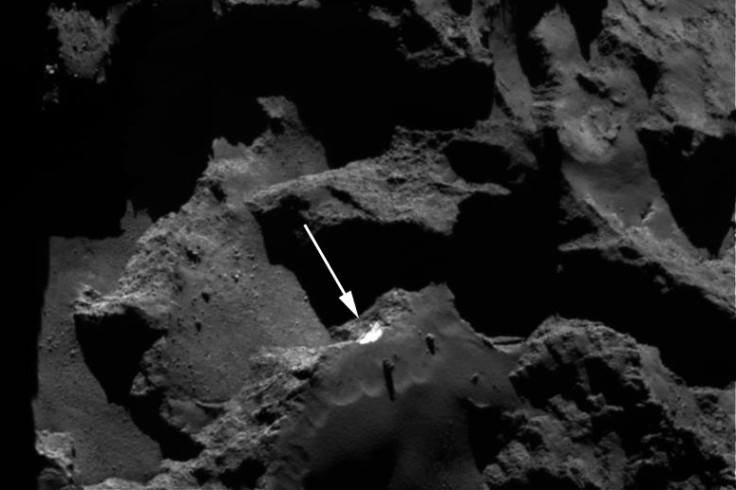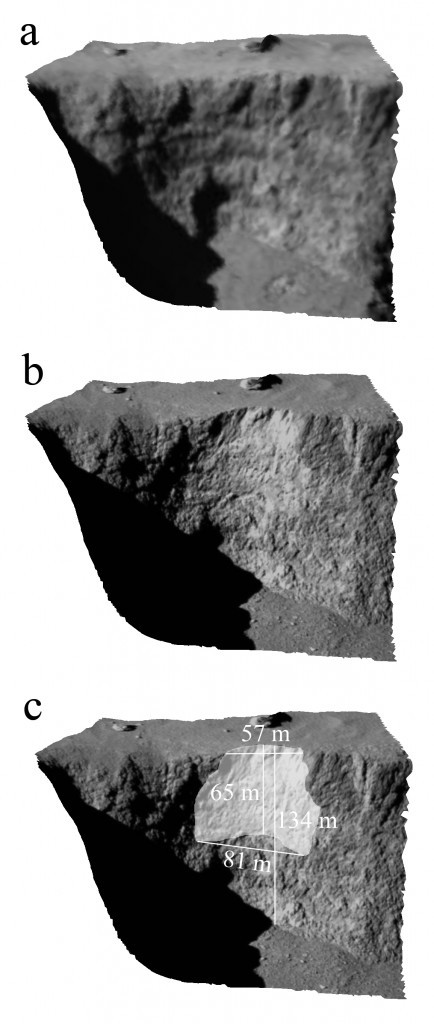Rosetta tracks massive landslide on Comet 67P
Landslide triggered plume of dust revealing the ice hidden beneath its surface.

A landslide on comet 67P/Churyumov–Gerasimenko triggered a plume of dust to be ejected, revealing pristine ice hidden beneath the surface.
In July 2015, the Rosetta spacecraft observed an outburst from the comet. Images from on board cameras had shown numerous surface changes taking place over the two years of observation. However, one in particular was of interest to researchers.
Outbursts are often seen on comets, but what causes them is not known. To understand what happens on the surface at the point of these outbursts, an international team of researchers studied an event on Comet 67P.
In two studies – one published in Nature Astronomy, the other in Science – researchers showed that landslides had taken place on the comet, with whole cliffs collapsing, drastically altering the surface landscape.
The researchers focused in on the July 2015 outburst – where a plume of gas was ejected out into space – and traced it back to its origin. From this, they were able to show it came from a cliff dubbed Aswan.
From this, they studied images of Aswan to see if anything had changed before and after the outburst. And findings showed it had – it had collapsed. This collapse exposed a layer of ice on the interior of the comet.

Being able to link outbursts to landslides on comets – and the huge change to the comet that results – will help scientists better understand how these space rocks form and evolve. "On 67P, multiple taluses are identified in association with cliffs20, suggesting that cliff collapses can be important processes in reshaping cometary surfaces," researchers conclude in the Nature paper.
"The OSIRIS and NavCam images from Rosetta provide a definitive link between the collapse, the outburst event and the talus formation."

© Copyright IBTimes 2025. All rights reserved.






















